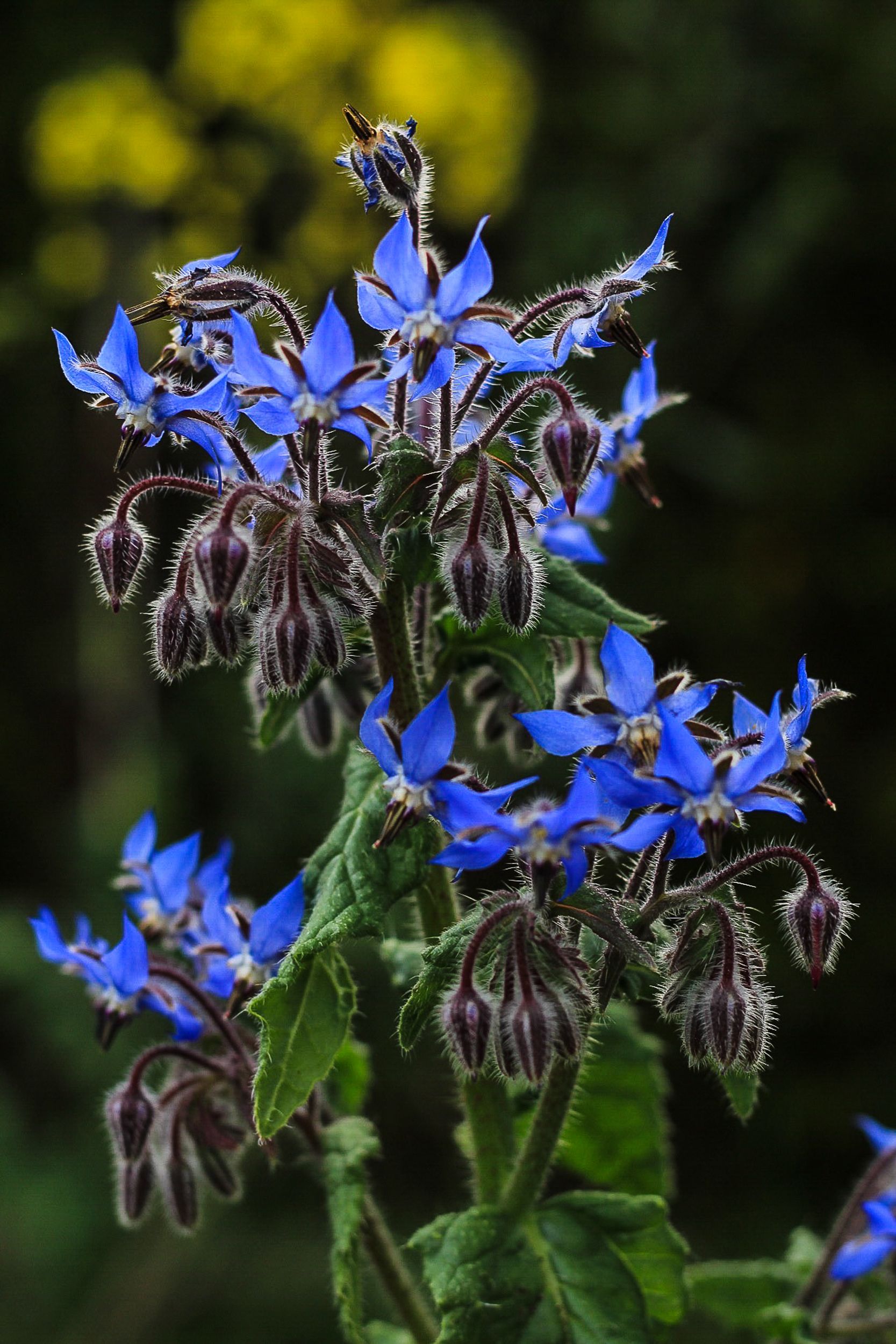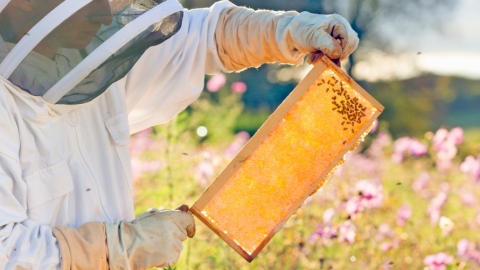Bee a Friendly Face
When I first created my edible garden, I focused on growing fruits and vegetables my family would eat. I didn’t pay much attention to flowers unless they were edible. However, it only took one season before I learned that my garden would be more productive by also planting flowers for the bees and other pollinators, and that creating bee-friendly spaces in urban areas helps protect the worldwide bee population. It’s a fantastic reason to grow more flowers!
Pollinators are any small birds and insects that gather nectar or take shelter amongst your blossoms. Bees are the most common and most efficient. There are honey bees, mason bees, bumblebees and more. In fact, there are upwards of 25,000 species of bees in the world, approximately 4,000 of which are native to North America. Hummingbirds, some bats and other insects like moths, wasps and butterflies also play a role in pollination.
And like us, pollinators need shelter, water and food.
Shelter
Creating a safe haven for pollinators begins with avoiding pesticides. As the number one killer of bees, pesticides should be avoided at all costs in the home garden. A bee-friendly shelter can be any safe and shady place for them to rest away from predators. This can be a dedicated bee house or simply a few upturned pots with holes for ingress and egress. It’s also wise to reduce outdoor lighting in your yard when not in use, because it can confuse bees as they look for places to sleep—or worse, keep them awake working at night.
Along with summer shelter, bees need places to overwinter in the garden. Honey bees will overwinter in their hive with their colony, eating their stores of honey. Other types of bees go dormant. Some bee species hide in bushes and dead leaves or burrow into the soil, so don’t overdo the garden cleanup in the fall.
Water
Water is as simple to provide as the shelter. Birds and bees will get some water from the flowers, but in the dry periods of summer, they need more. Shallow dishes or bird baths filled with water and a few pebbles for them to stand on work great. Keep them in the shade to slow evaporation and keep them cool.
Food
And finally, the exciting part: designing your pollinator garden! The ideal garden is sunny and filled with a large variety of pollen-rich flowers that bloom in succession from early spring until late fall. When choosing your flowers, buy organic starters to ensure they are pesticide free. Avoid double varieties and stick to simple flowers that let bees easily reach the nectar at the center. Here are some great ideas to implement in your pollinator-friendly garden:
-- Make use of native plants and flowers. Their nectar and pollen naturally have all the nutrients (sugar, protein and fat) that bees and other beneficial insects and birds require. While almost any flower can provide food, natural varieties and native species do it better.
-- Dandelions are some of the earliest food for pollinators. Allowing early blooming dandelions and clover to flower is an important strategy in attracting bees to your yard. Once your spring flowers start, you can mow down the weeds if you like.
-- Flowering trees add great structure and shape to the garden. Fruit and nut trees are an apian favorite. Maples are a top food source too, despite not having very showy flowers, as are willows, redbud and serviceberry.
-- Grow medicinal herb flowers. Lavender, thyme and oregano help bees ward off mites, protecting their health.
-- Blue, purple, yellow and white are bees’ favorite colors. Bees don’t have the best long-distance eyesight, so planting your flowers in large clumps or drifts acts as a target for them to aim for. Tall sunflowers act as a beacon, calling in bees from afar.
-- Tubular flowers invite bees and hummingbirds in for a big drink, like foxgloves and fuchsias.
-- Scented flowers indicate nectar to bees. Bee balm, lilies and lavender let the bees know when they are ready for pollination with their smell.
-- Perennials produce shelter and food for a long period of time. Milkweed, coneflower, yarrow, black-eyed Susan and catnip are just a few great, low maintenance pollinator picks.
Who would think that something as simple as planting flowers and avoiding pesticides can have such a wonderful impact on our world?
|
Did you know? 75% of the world’s crops depend on bees. Honeybees have tiny hairs on their eyes that help collect pollen. They also carry it back to the nest on their hind legs in their basket-like corbiculae. A queen bee only leaves the hive once. She leaves to find a mate and spends the rest of her life laying eggs. Only female bees can sting. The fastest bees can fly up to 48 kilometers per hour. Most fly 12-28 kilometers per hour. Scientists believe bees can identify and remember human faces when motivated to do so. |






